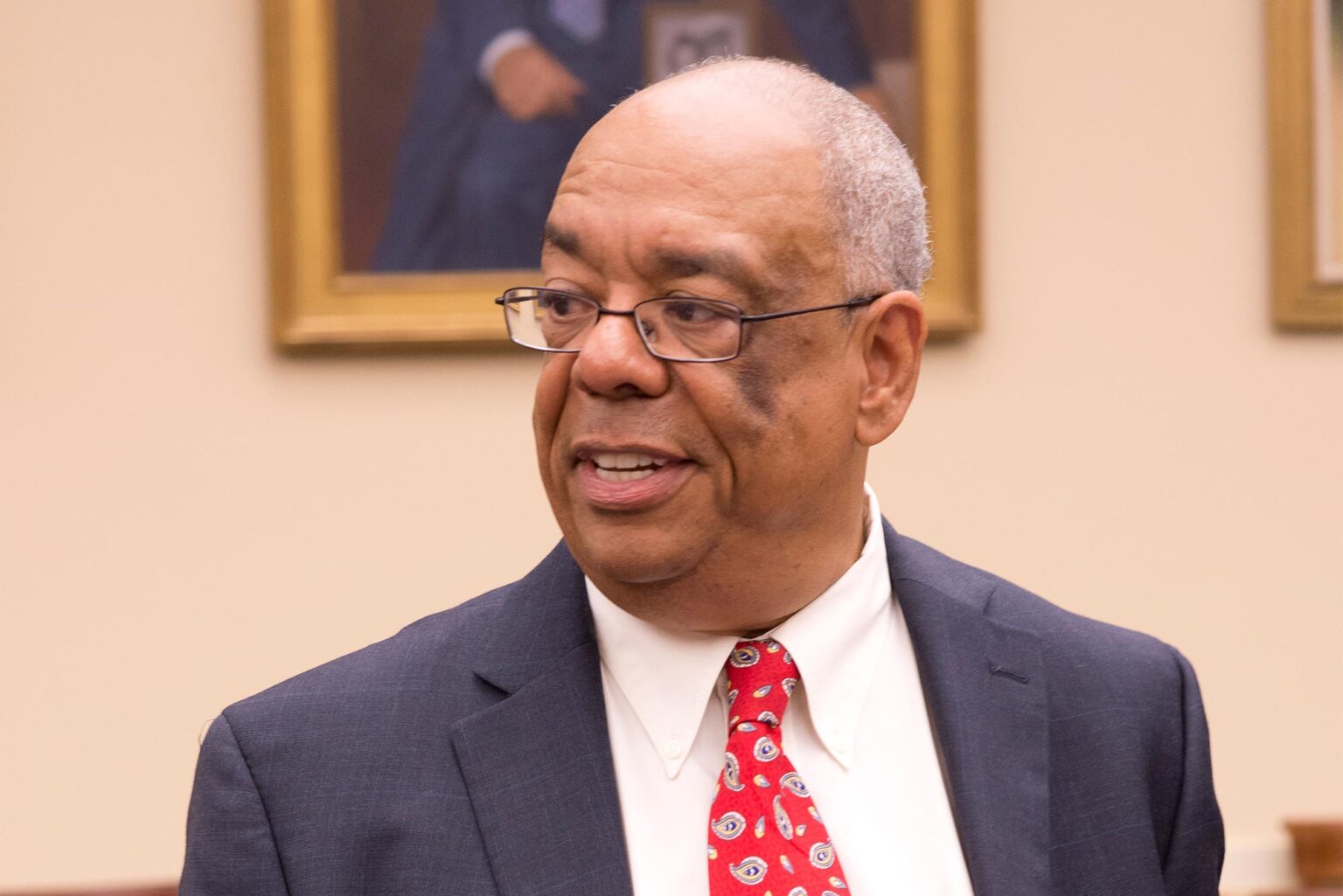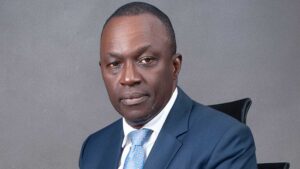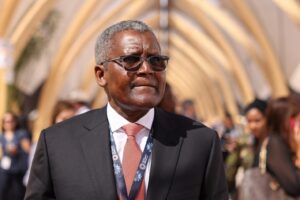Synopsis
Roscoe Giles is an African-American professor of Electrical and Computer Engineering in the Department of Electrical and Computer Engineering, and he is a founding member of the Faculty of Computing and Data Sciences at Boston University (BU). He is also a distinguished physicist and the first black person to get a Ph.D. in physics from grad school at Stanford University. He currently serves as the deputy director of Boston University’s Centre for Computational Science.
Introduction
Roscoe Giles is a distinguished American physicist and computer engineer renowned for his significant contributions to the field of computer science. He began his career in the mid-1970s, starting his career as a research assistant at the SLAC National Accelerator Laboratory, which was originally named the Stanford Linear Accelerator Centre, and the MIT Centre for Theoretical Physics before he became an assistant professor at the Massachusetts Institute of Technology from 1979 to 1985. After this, Roscoe switched to computer engineering after joining Boston University as an associate professor and was promoted to a full professor in the year 1999.
In 1975, Roscoe received his doctorate from Stanford University, becoming the first person of color to receive a Ph.D. in theoretical physics from the university. He worked at SLAC while at Stanford.
Roscoe is known for his contributions to advanced computer science; his research has had a profound impact on the development of high-performance computing systems and their applications across various disciplines.
As earlier stated, Roscoe has a distinguished educational background; he earned a bachelor’s degree in physics from the University of Chicago in 1970. He continued his education at Stanford University, where he both obtained a Master’s degree and a Doctor of Philosophy (Ph.D.) in Physics.
Roscoe grew up on the South Side of Chicago and attended high school in nearby Hyde Park at the University of Chicago Laboratory Schools, where he gained his first exposure to computers through access to the School of Education’s IBM 1620. He is married to Frances Reeder, and they both have children.
1. Who is Roscoe Giles?
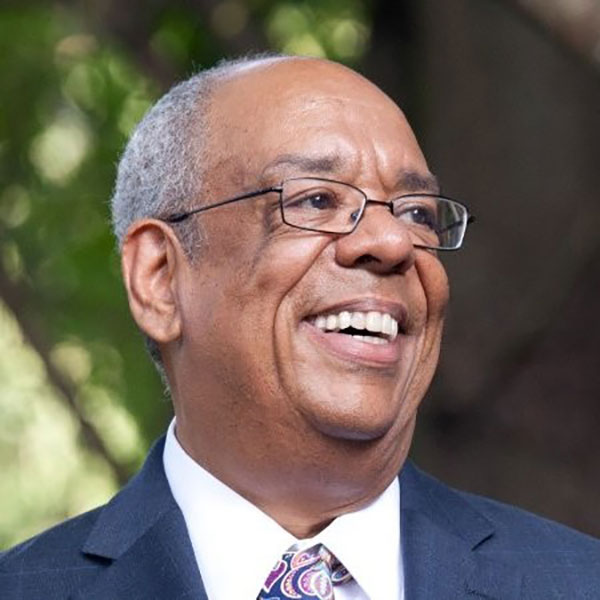
Roscoe Gilles, an African American physicist and computer engineer, is also a professor of computational science at Boston University. He was given birth on April 6, 1949, in Oakland, California. Roscoe is known for his research on advanced computer architectures, distributed and parallel computing, and computational science. He has won numerous awards as well as some historic feats, one of which was the first black person to hold a Ph.D. in theoretical physics from Stanford University.
Roscoe’s career started at SLAC, where he worked as a research associate, and at the at the MIT Centre for Theoretical Physics before he became an assistant professor at the Massachusetts Institute of Technology from 1979 to 1985.
Roscoe’s career path shifted from physics to computing at Boston University around 1990. Prior to that period, Roscoe shared in an interview his initial experience with computing during his high school years. While working as a graduate student in SLAC, Giles said he studied string-like models and used computer simulations (IBM 360/91) to capture oscillation modes and produce simple graphics. So, apparently, he had an interest in computational science way back.
His research in computational science on advanced computer architectures, distributed and parallel computing, and computational science is well known, using high-performance parallel computers to solve problems in physics and material science and developing algorithms for large-scale micro-magnetic modelling and molecular dynamics simulation.
Roscoe is a professor at Boston University and the deputy director of Boston University’s Centre for Computational Science. He is a man honored with several awards and recognitions.
2. What makes Roscoe Giles special?
Roscoe stands out as a prominent figure in both physics and computational science. His pioneering work in advanced computer architecture, distributed and parallel computing, and computational science has shaped the field of science.
Giles is the first African American to have earned a Ph.D. in theoretical physics from Stanford University, also earning honours such as the A. Nico Habermann award offered by the Computing Research Association to Roscoe’s in recognition of his contributions aimed at increasing the involvement of under-represented communities in computing research. In 2004, he was listed as one of the “50 Most Important Blacks in Research Science,” earning many awards to his name.
Another special thing about Roscoe is his leadership skills; his role as deputy director of Boston University’s Centre for Computational Science and team leader at the National Partnership for Advanced Computational Infrastructure (NPACI) has demonstrated his leadership abilities. The NPACI has educated students and teachers on advanced computing systems for problem understanding, modelling, and solving. He is the founder and executive director of the Institution of African American E-Culture, which fights hi-tech inequality.
3. What Roscoe Giles care about?
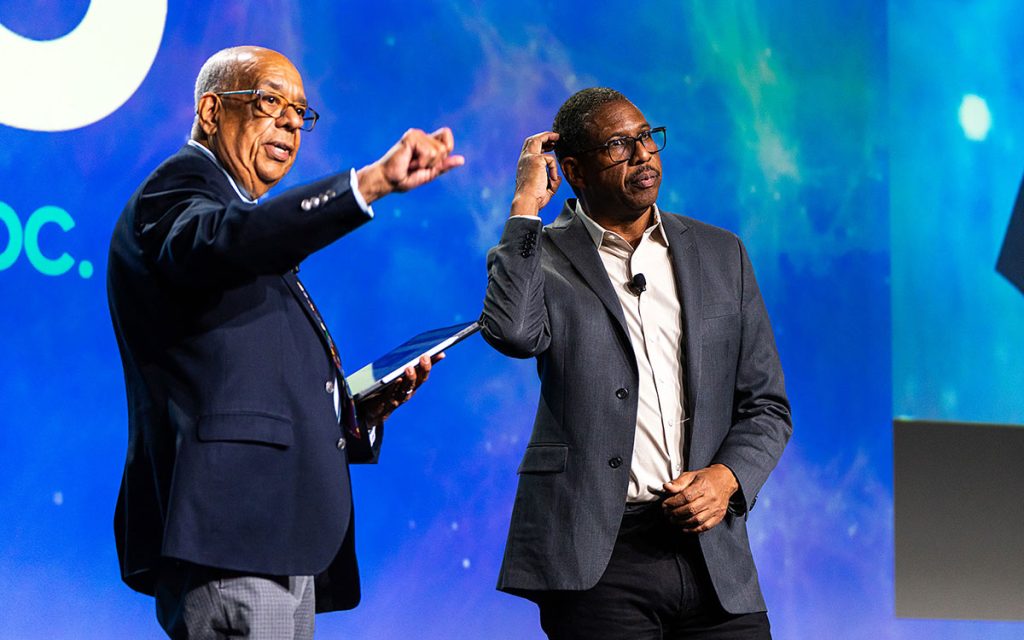
Roscoe’s career is dedicated to advancing computational science and its application. He is committed to advancing computational science, mentoring future scientists, and serving the broader community through various advisory committees. This can be seen in his inclusion in STEM fields by founding the Institution of African American E-Culture, where he and his team deal with the problem of the digital divide, or the lack of access to information technology by minority groups and other poor communities in the US.
Essentially, Roscoe cares about creating opportunities for others, advancing knowledge in his field, and making a positive impact on society.
4. What are Roscoe Giles’s greatest deeds?
Being the first African American to earn a Ph.D. in theoretical physics from Stanford University is a monumental feat. This is not only Roscoe’s “first African American” feat he has achieved; in 2002, Roscoe was the first African American to take the role of chair of the Supercomputing Conference in Baltimore. These are indeed great deeds done by the professor, as she has earned countless awards and honours, standing out as a model for people of colour and encouraging them to take charge and do spectacular things.
His pioneering research in advanced computer architectures, distributed and parallel computing, and computational science has helped to improve science by solving problems in physics and material science and developing algorithms for large-scale micro-magnetic modelling and molecular dynamics simulation.
Also, Roscoe’s fight for hi-tech inequality through the founding of the Institution of African American E-Culture has helped to solve the problem of the digital divide, or the lack of access to information technology by minority groups and other poor communities in the US.
5. What Roscoe Giles faced as challenges?
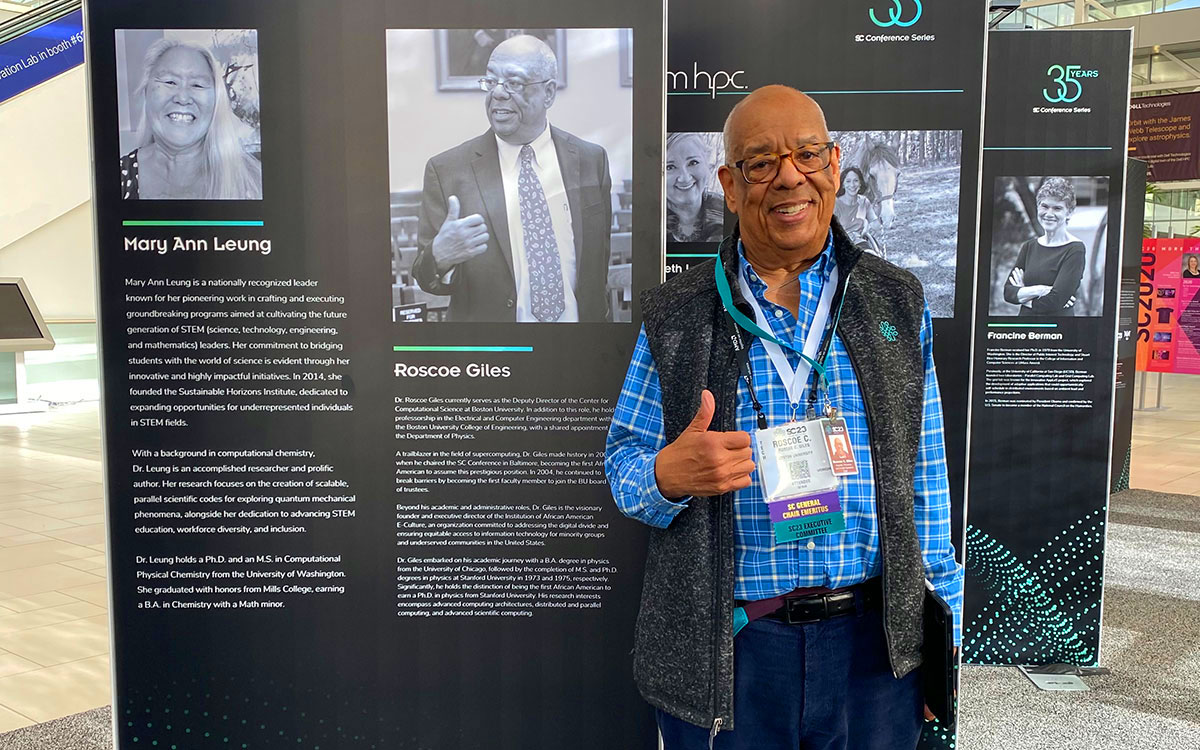
Roscoe’s awards and honours appear to have kicked off in the early 1970’s; he must have strived harder than his peers to break the racial discrimination against black people. The time, energy, and strength he must have put in to encourage black and other under-represented groups of people to engage with computing and HPC must have been serious.
6. What keeps Roscoe Giles motivated?
Roscoe’s focus on distributed and parallel computer and supercomputer applications, simulations of large-scale molecular systems, advanced computer architectures, computational science, and micromagnetism has helped to solve problems in physics and material science and develop algorithms for large-scale micromagnetism modelling and molecular dynamics simulation.
His research on high-performance parallel computer simulations in QCD (quantum chromo dynamics) and molecular dynamics must have been fuelled by his grit to solve problems.
Roscoe is also motivated by his passion to encourage black and other under-represented groups of people to engage with computing and HPC.
7. Why is Roscoe Giles such a role model?
Roscoe Giles is a role model primarily because of his groundbreaking work in technology and unwavering commitment to education. This is supported by his remarkable educational background, including being the first African American to earn a Ph.D. in theoretical physics from Stanford University and chair the Supercomputing Conference.
In a predominantly white field, he broke racial barriers by founding the Institution of African American E-Culture, bridging the digital divide, and mentoring the next generation of scientists and computer experts.
Also, Roscoes’ leadership and advocacy at the US Department of Energy’s Advanced Scientific Computing Advisory Committee further highlight his influence at the highest levels of government.
In essence, Roscoe Giles is a role model because he excelled in his field, used his position to foster opportunities for others, and advocated for marginalized communities, inspiring future generations to pursue STEM careers and promote a more equitable society.
8. What is Roscoe Giles currently working on?
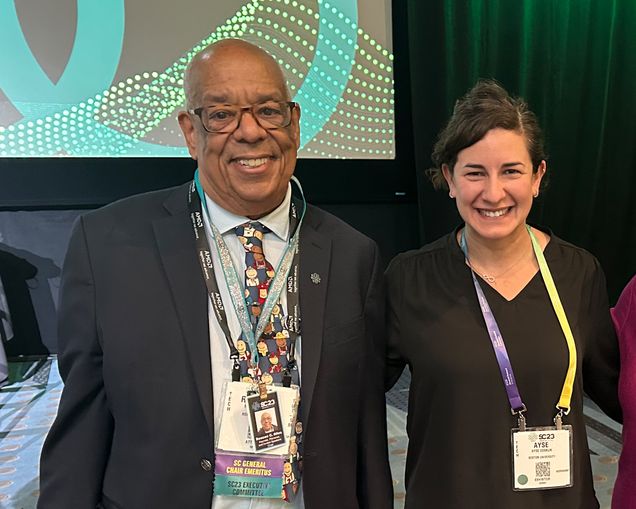
Roscoe Giles is currently a professor of computer and electrical engineering at Boston University, as well as the deputy director of the center for computational science. He is a leading figure in computational science, contributing significantly through research, education, and leadership. Giles’ interests include advanced computer architectures, distributed and parallel computing, computational science, and micromagnetism. His commitment to pushing the boundaries of computational science and fostering diversity in the field is evident in his ongoing involvement.
Also, he is still actively involved in the running of the Institute for African American E-Culture, which fights hi-tech inequality and continuously solves the problem of the digital divide, or the lack of access to information technology by minority groups and other poor communities in the US.
9. What could slow Roscoe Giles down?
Nothing seems to be slowing Roscoe down; the professor’s impressive track record and current position show he’s still active in his duties. However, he might be slowed down by the age factor. Roscoe was given birth on April 6, 1949, making him 75 years old currently. Apparently, the strength and vigor must have reduced due to ageing.
10. What can you learn from Roscoe Giles?
Roscoe Giles offers a wealth of inspiration and knowledge and is a pioneer in computational science, breaking through barriers and achieving remarkable success. His resilience and determination are evident in his pursuit for excellence.
Roscoes’ passion for education and mentorship is evident in his tremendous educational background and commitment to bridging the digital divide and nurturing talent. His pioneering work in advanced computer architectures, distributed and parallel computing, and computational science has helped to improve science by solving problems in physics and material science and developing algorithms for large-scale micro-magnetic modelling and molecular dynamics simulation, showcasing his innovative spirit and ability to push knowledge boundaries.
Also, Roscoe’s leadership roles in various organizations demonstrate his commitment to creating positive change. His achievements inspire under-represented groups to pursue careers in STEM fields.
Studying Giles’ life and work will provide valuable insights into the qualities necessary for success, the importance of education and mentorship, and the power of leadership and advocacy.
Pro Tips
Here are some pro tips based on Roscoe’s life and career:
- Break barriers; don’t let your culture or stereotype determine your potential.
- Invest in your education with a deep focus on learning.
- Embrace growth; don’t be lazy to remain in a position; strive for more.
- Be a role model for others, worthy of emulating.
Summary
Roscoe Giles is a physicist and a pioneer in computational science. He is the first African American to earn a Ph.D. in theoretical physics from Stanford and chair the Supercomputing Conference. Roscoe broke racial barriers in a predominantly white field and is committed to creating opportunities for under-represented communities. He founded the Institution of African American E-Culture to address the digital divide and has been involved in mentoring programs.
He currently serves as Deputy Director of Boston University’s Centre for Computational Science, focusing on research, education, and leadership.


